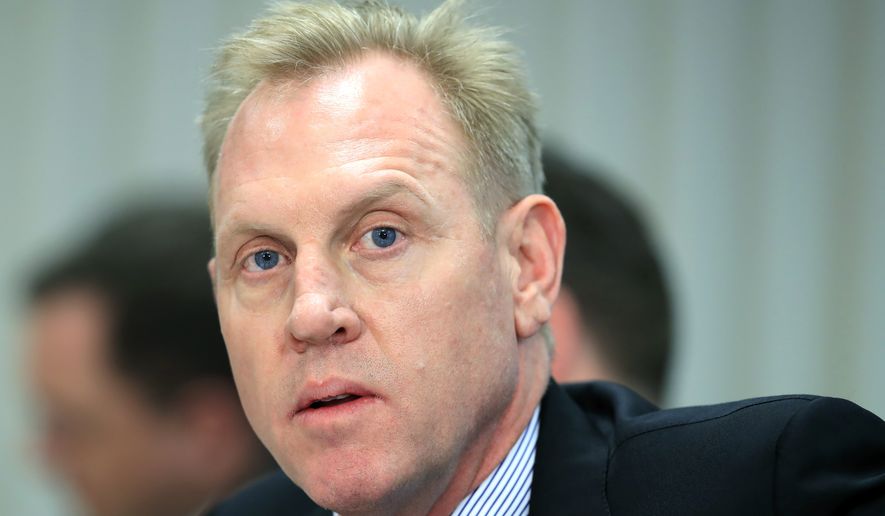Even as President Trump’s proposed Space Force inches ever closer to reality, Mr. Trump’s Pentagon chief and a top House Armed Services Committee Republican appear to be divided on the proposal’s progress.
Texas Rep. Mac Thornberry said Tuesday in an interview he doesn’t “think anybody is satisfied” with the Space Force proposal the White House sent to Congress in February, doubts that he shares.
Just hours before, in Colorado Springs, acting Defense Secretary Patrick Shanahan rolled out the department’s plan to consolidate the U.S. military effort in space into three parts: the U.S. Space Force, U.S. Space Command and the Space Development Agency.
“We are not going to sit back and watch — we are going to act,” he said, warning that the U.S. military is not moving quickly enough “to stay ahead” of rivals such as China and Russia.
Speaking at the Space Symposium, Mr. Shanahan said rivals such as China and Russia “have weaponized space with the intent to hold American space capabilities at risk.” The threats include GPS-jamming systems, directed-energy weapons, ground-based laser systems and hypersonic weapons.
The U.S. is not currently “capable of tracking” some of these weapons, he said.
The acting defense secretary said that the Space Force, an idea that President Trump has pushed aggressively, will be responsible for organizing, training, and equipping a military force.
Conceived as a relatively small service, the newest branch would initially include 15,000 to 20,000 people drawn from existing forces, Mr. Shanahan said
Today’s space experts, Mr. Shanahan said, “go through a professional military education system focused on either air, land or seapower. Space is an add-on, a supporting effort, not the focus.”
The Space Force will cost each American about $1.50 per year, an additional cost about a tenth of 1 percent of the Pentagon’s budget, Mr. Shanahan said.
“We are starting now because we refuse to fall behind,” he added. “We can outpace our competitors and make it impossible for them to contest our dominance in space.”
The Pentagon has been defending its budget proposal on Capitol Hill calling for an increase of about 3 percent over FY 2019. Mr. Shanahan called on lawmakers, many of whom have been skeptical of the need for a separate new force, to pass the proposed budget on time.
“With help from Congress, we will create the Space Force and ensure the focus is on growing warfighter capability — not bureaucracy,” he said.
But House Armed Services Committee Chairman Adam Smith, Washington state Democrat, has long been a skeptic of the idea, and Mr. Thornberry, the former GOP chairman of the panel, said Tuesday the plan was not “fleshed out the way it should be” before hitting Capitol Hill.
“I have no doubt there will be changes to what the administration sent over,” he said.
The ranking member said he put “a lot of confidence” in Reps. Jim Cooper, Tennessee Democrat, and Mike Rogers, Alabama Republican, who have spearheaded the Space Force’s progress in the House.
“It doesn’t mean they’re going to solve every problem in space,” Mr. Thornberry told The Times, “but it means that I think our committee can start out on a good track and take the central steps that need to be taken now, even though there will undoubtedly be more that is added to it as time goes on.”
Despite his skepticism of the existing proposal, Mr. Thornberry said he does believe that a Space Force could be established under the Air Force soon. As for a Space Force as a separate, sixth branch of the U.S. military, Mr. Thornberry says, “someday, maybe.”
• Lauren Toms can be reached at lmeier@washingtontimes.com.




Please read our comment policy before commenting.